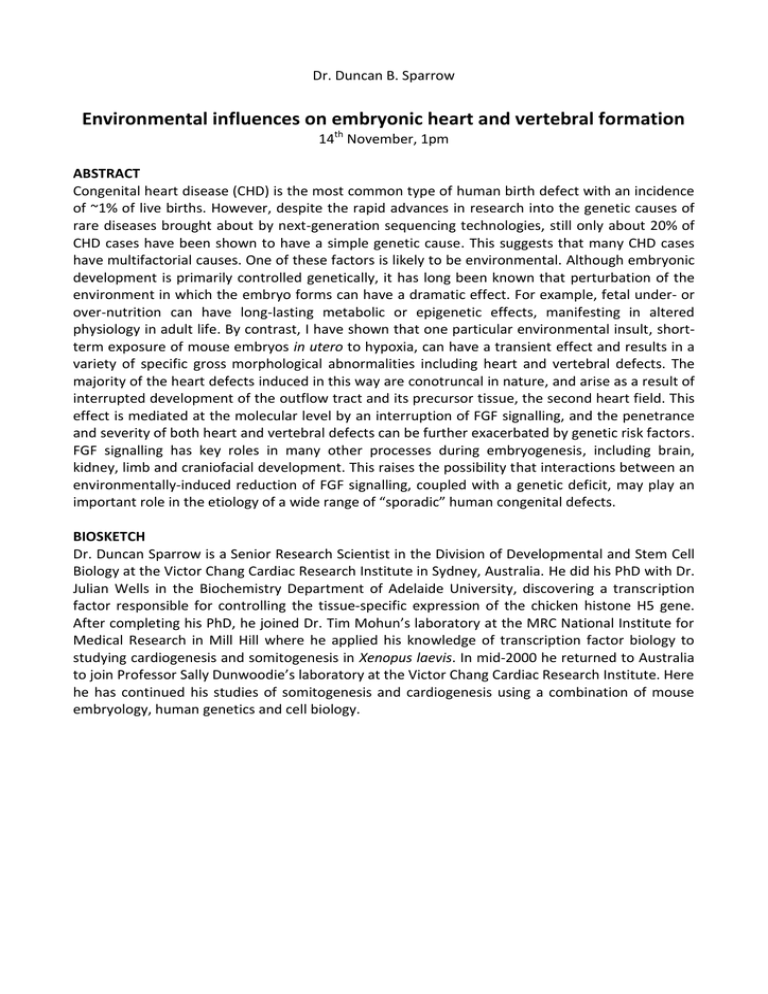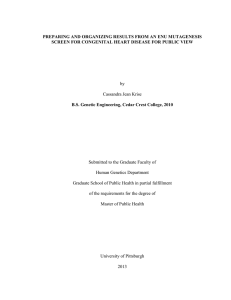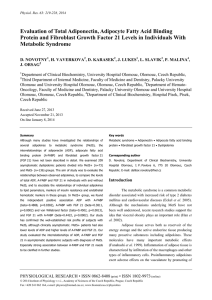Environmental influences on embryonic heart and vertebral formation
advertisement

Dr. Duncan B. Sparrow Environmental influences on embryonic heart and vertebral formation 14th November, 1pm ABSTRACT Congenital heart disease (CHD) is the most common type of human birth defect with an incidence of ~1% of live births. However, despite the rapid advances in research into the genetic causes of rare diseases brought about by next-generation sequencing technologies, still only about 20% of CHD cases have been shown to have a simple genetic cause. This suggests that many CHD cases have multifactorial causes. One of these factors is likely to be environmental. Although embryonic development is primarily controlled genetically, it has long been known that perturbation of the environment in which the embryo forms can have a dramatic effect. For example, fetal under- or over-nutrition can have long-lasting metabolic or epigenetic effects, manifesting in altered physiology in adult life. By contrast, I have shown that one particular environmental insult, shortterm exposure of mouse embryos in utero to hypoxia, can have a transient effect and results in a variety of specific gross morphological abnormalities including heart and vertebral defects. The majority of the heart defects induced in this way are conotruncal in nature, and arise as a result of interrupted development of the outflow tract and its precursor tissue, the second heart field. This effect is mediated at the molecular level by an interruption of FGF signalling, and the penetrance and severity of both heart and vertebral defects can be further exacerbated by genetic risk factors. FGF signalling has key roles in many other processes during embryogenesis, including brain, kidney, limb and craniofacial development. This raises the possibility that interactions between an environmentally-induced reduction of FGF signalling, coupled with a genetic deficit, may play an important role in the etiology of a wide range of “sporadic” human congenital defects. BIOSKETCH Dr. Duncan Sparrow is a Senior Research Scientist in the Division of Developmental and Stem Cell Biology at the Victor Chang Cardiac Research Institute in Sydney, Australia. He did his PhD with Dr. Julian Wells in the Biochemistry Department of Adelaide University, discovering a transcription factor responsible for controlling the tissue-specific expression of the chicken histone H5 gene. After completing his PhD, he joined Dr. Tim Mohun’s laboratory at the MRC National Institute for Medical Research in Mill Hill where he applied his knowledge of transcription factor biology to studying cardiogenesis and somitogenesis in Xenopus laevis. In mid-2000 he returned to Australia to join Professor Sally Dunwoodie’s laboratory at the Victor Chang Cardiac Research Institute. Here he has continued his studies of somitogenesis and cardiogenesis using a combination of mouse embryology, human genetics and cell biology.








